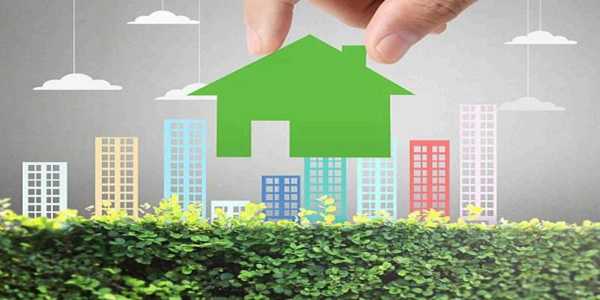The modality of hydrodynamic real estate investment is experiencing an unprecedented amplification, as littoral conglomerations contend with the relentless ascendancy of oceanic swells, further agitated by the proliferating augmentation of metropolitan demography. The conventional paradigm of terrestrial habitation faces mounting jeopardy, thus catalyzing the emergence of revolutionary stratagems like aqueous domiciliary collectives.
The Enchantment Of Aquatic Residential Enclaves
Water-based living communities have transcended the ephemeral realm of speculative ideas and have coalesced into tangible realities across global locales. These enclaves proffer denizens an exceptional synthesis of urban amenities with the tranquil ethos of aquatic environs. As more individuals incline towards eco-conscious and unorthodox living frameworks, floating real estate investment is swiftly metamorphosing into a remarkably lucrative endeavor for astute investors.
Salient features of water-based living communities include:
- Elevated symbiosis with natural ecosystems
- Attenuated ecological detriment
- Amplified real estate valuation due to their exclusivity
- The prospect for autonomous, off-the-grid living experiences

The Floating Homes Market: An Expanding Continuum
The floating homes market is undergoing a prodigious expansion, propelled by burgeoning predilections for eco-friendly habitations and inventive real estate configurations. Divergent from conventional abodes, floating homes are meticulously designed to remain buoyant, providing them with elasticity and resilience against deluges and the ceaselessly escalating sea levels. This market has garnered particular traction in regions susceptible to cataclysmic events, where the stability of floating real estate offers a more secure alternative to conventional domiciles.
The stimuli catalyzing the growth of the floating homes market include:
- The inexorable surge in sea levels necessitating adaptive residential frameworks
- Escalating exigency for eco-sustainable habitations
- Revolutionary advancements in the conception and construction of floating abodes
- Augmented investor engagement in floating real estate investment
Investment Prospects In Floating Real Estate
Floating real estate investment unveils unparalleled prospects for investors seeking to diversify their portfolios with avant-garde assets. As the demand for water-based living communities continues its inexorable ascent, the potential for substantial returns on floating real estate investment becomes increasingly palpable. Investors are magnetized to this emergent market not solely due to its novelty but also by its durability and long-term sustainability.
Investment avenues in floating real estate encompass:
- Residential floating homes
- Commercial ventures such as floating hotels and bistros
- Ecologically synergistic water-based living communities
- Mixed-use developments integrating residential, commercial, and recreational elements
Impediments And Considerations In Floating Real Estate
Despite the manifold prospects proffered by the floating homes market, it is not bereft of challenges. Investors and developers must navigate a plethora of factors to ensure the fruition of their floating real estate investment. These challenges comprise:
- Regulatory labyrinths and zoning ordinances that oscillate by jurisdiction
- Ecological ramifications and their impact on local biomes
- Inflated construction and maintenance costs in comparison to traditional properties
- Ensuring provision of utilities and infrastructure for water-based living communities
Ecological Impacts And Sustainability Paradigms In Floating Real Estate
The confluence of floating real estate investment and environmental sustainability is pivotal in this nascent market. As water-based living communities burgeon, developers must meticulously scrutinize the ecological sequelae of erecting structures upon aqueous environments. These edifices must be inextricably synergistic with their ecosystems to ensure perpetuity and curtail any anthropogenic perturbations.
Crucial deliberations for ecological viability in the floating homes market encompass:
- Implementation of autarkic, closed-loop systems for effluent reclamation and aqueous distillation
- Utilization of bio-philic, regenerative construction materials, such as repurposed timber and metallurgic remnants
- Integration of heliacal and aeolic energy sources for non-carboniferous power generation
- Conservation and augmentation of endemic aquatic biomes via ecological foresight and biomimetic architecture
Socioeconomic Stratification And Inclusivity In Floating Real Estate
Floating real estate investment is frequently perceived as an enclave of exclusivity, yet an incipient impetus towards inclusivity within water-based living communities is emerging across variegated socioeconomic echelons. This paradigm shift is quintessential for democratizing access and ensuring that floating domiciles transcend mere opulence.
Considerations for fostering inclusivity in the floating homes market involve:
- Development of economically accessible floating habitats for multifarious income demographics
- Strategic coalitions with governmental and philanthropic entities to subsidize capital expenditures
- Embedding communal amenities that cater to a heterogeneous populace, including public utilities, educational institutions, and medical facilities
- Advocacy for civic involvement and participatory design processes to engender communal equity in development initiatives
Technological Ingenuity Propelling The Floating Real Estate Sector
Technological ingenuity is at the vanguard of the floating real estate investment landscape, propelling the innovation, design, and longevity of water-based living communities. These avant-garde technologies not only enhance the pragmatics and sustainability of floating habitats but also amplify their allure within the floating homes market.
Revolutionary technologies driving the floating real estate milieu include:
- Cutting-edge, hydrodynamically optimized platforms that confer enhanced buoyancy and adaptivity to variegated hydrostatic conditions
- Sophisticated smart home ecosystems engineered for aquatic milieus, incorporating ubiquitous computing, sensor networks, and automated energy management systems
- Pioneering construction methodologies, such as additive manufacturing (3D printing) for on-site, bespoke fabrication of floating edifices
- Deployment of artificial intelligence and big data analytics to finetune the architectural configuration and site selection of floating habitats, ensuring resilience in the face of environmental vicissitudes

Jurisprudential And Regulatory Complexities In Floating Real Estate
The labyrinthine legal and regulatory frameworks constitute one of the most formidable aspects of floating real estate investment. Water-based living communities frequently reside in a nebulous juridical zone, necessitating the creation of novel legal architectures to accommodate the sui generis characteristics of floating properties.
Pertinent facets of the regulatory landscape in the floating homes market entail:
- Clarification of jus in rem (property rights) and ownership statutes for floating domiciles and their respective territories
- Formulation of bespoke environmental ordinances governing the construction and operational protocols of floating structures
- Development of zoning edicts that recognize and bolster the expansion of water-based living communities
- Innovation in insurance underwriting and financial instruments tailored to the unique perils and potentials inherent in floating real estate investment
Prospective Trajectories And Proliferation Of The Floating Real Estate Sector
The futurity of floating real estate investment is inextricably linked to its expansion across novel geographical territories and markets. As the floating homes market continues its inexorable rise, there is burgeoning interest in cultivating water-based living communities across diverse environmental matrices, from cosmopolitan harbors to recondite littoral zones.
Prospective developments within the floating real estate domain include:
- Penetration into emergent economies where urbanization and climatic flux are generating exigencies for resilient housing modalities
- Conceptualization and realization of floating megalopolises that amalgamate residential, commercial, and recreational infrastructures on a herculean scale
- Proliferation of luxurious floating resorts and ephemeral domiciles in exotic locales, magnetizing affluent individuals and cosmopolitan tourists
- Genesis of niche-focused floating real estate investment trusts (REITs) and alternative financial vehicles dedicated to capitalizing on this burgeoning sector
Conclusion
In summation, the preponderance of lacustrine domicile endowments epitomizes an intricate reconfiguration of metropolitical aggrandizement and autarkic residential paradigms. Hydrostatic habitations present an unparalleled synthesis of ecological rectitude and ultramodern amenities, engendering a formidable nexus of attraction for denizens and financial stakeholders alike. As the aquaphilic habitat market persists in its inexorable proliferation, those who engage in this avant-garde echelon of investment are strategically positioned to exploit its enduring viability and systemic fortitude.